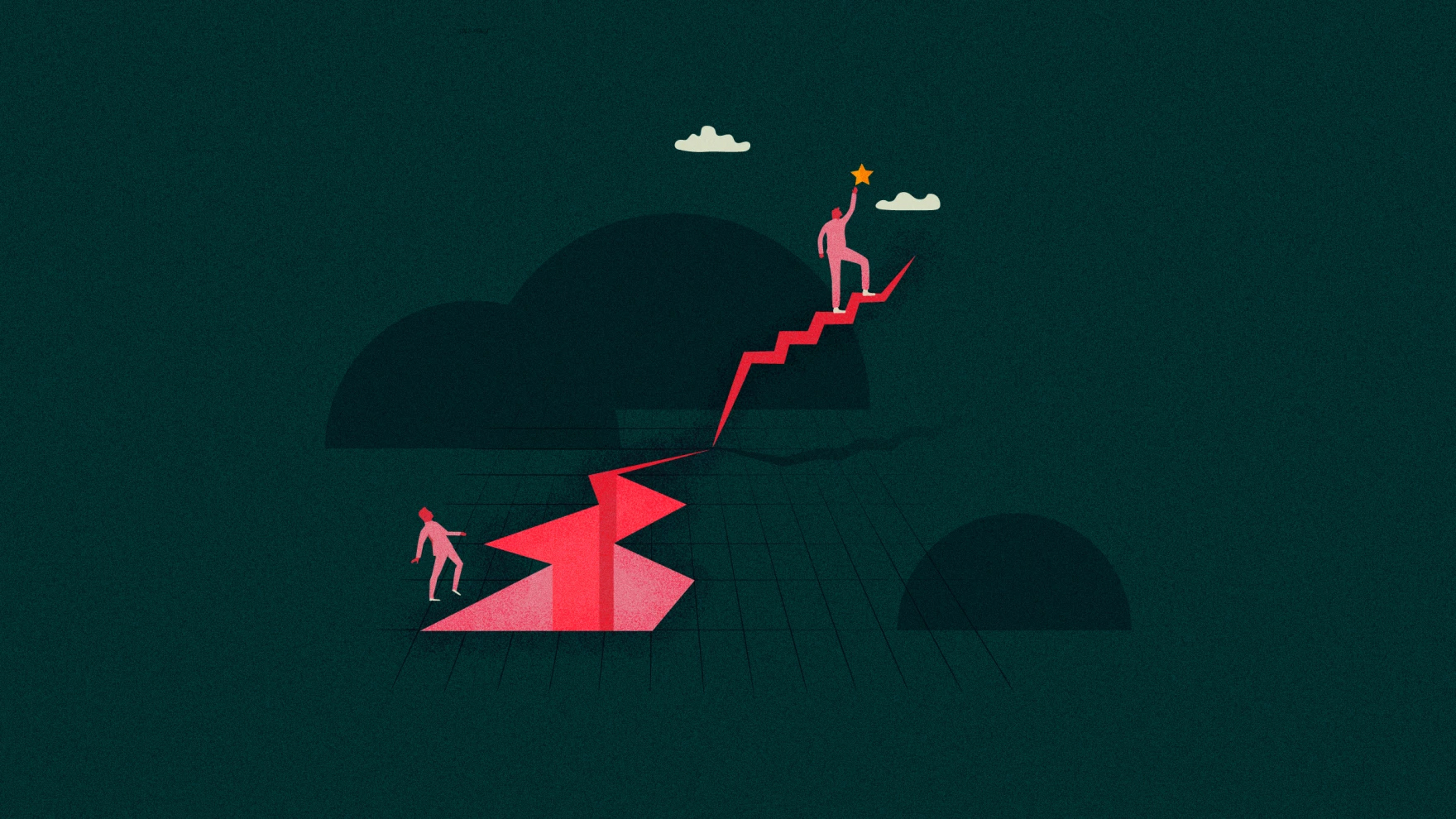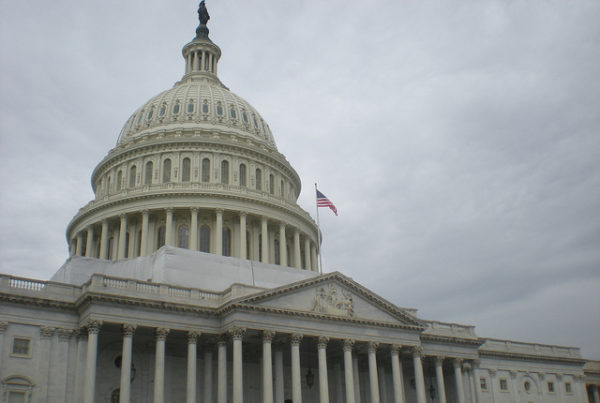KERA’s One Crisis Away project focuses on North Texans living on the financial edge.
Debt ballooned during the pandemic, helping the wealthy build wealth as others tread water
Americans have tacked on a more than $2 trillion in household debt since the pandemic began. Dig into that eye-popping number, and an increasingly unequal America emerges.

Anita Moti / KERA
For the already well-off, the pandemic has been a financial boon. For middle- and lower-income families, the picture hasn’t been so sunny.
From KERA:
Household debt is at a historic high, according to the most recent numbers from the Federal Reserve Bank of New York, and Americans now owe a collective $16.15 trillion.
The numbers may be bewilderingly large, but what stands out as unusual to Fed economist Andy Haughwout is that Americans kept piling on household debt even as the country went into a recession in the spring of 2020.
“That is in stark contrast to the Great Financial Crisis, where we saw households shedding debt, paying off debt either by defaulting on obligations [and facing foreclosure], but also just paying them down,” Haughwout said. “In this case, we see debt continuing to grow.”
Good debt
Housing debt makes up most of the debt Americans owe, about 72%. Even as home prices rose dramatically, people have continued buying homes. While older, existing homeowners refinanced their debt to get lower interest rates, most of the new mortgage debt belongs to younger people who bought homes for the first time or traded up to get more space.
“There’s a very strong housing market out there, so young people are buying houses and houses are getting more and more expensive and that’s driving up their need to borrow to be able to afford those houses,” Haughwout said.
As long as there aren’t tons of people buying more house than they can afford – and home values don’t drop dramatically – most economists say we’re not likely to see a housing-based recession like we did in 2008. By and large, mortgage debt is a long-term investment that helps stabilize family finances and build wealth, compared to debt from credit cards or payday loans that carry high costs that can erode a family’s financial security.
For those who owned homes before the pandemic, the massive increase in home values meant a big increase in household wealth. In the Dallas-Fort Worth region, the typical home value has grown 53% since the beginning of 2020, according to the real estate firm Zillow.
But those rising values have also priced a lot of people out of homeownership.
For lower- and middle-income people, the debt picture through the pandemic has been murkier, said Joanna Smith-Ramani, managing director of the Aspen Institute’s Financial Security Program.
“It’s not an easy story to tell. It has conflicting data. The averages mean nothing. The details mean everything,” she said.
A ‘fragile country’
Overall, most lower- and middle-class people are not significantly worse off than they were before the pandemic, though some report greater debt burdens than they started with. That means federal stimulus programs prevented an economic freefall like the Great Recession, she said, but preserved a deeply unequal society.
“We weren’t a country with rainbows and sunshine and happiness and financial security [before the pandemic],” she said. “We were a fragile country with about half of our country living in some sort of financial fragility.”
And as inflation continues to outpace wages, that precarity remains a defining fact of life for many American households.
When the pandemic hit, it hit the most financially vulnerable.
There were higher rates of serious illness and deaths among Black and Latino people, in no small part because lower-income people of color were more likely to be working face-to-face. That exacerbated and elongated the financial toll of the pandemic’s arrival, according to Mechele Dickerson, a professor at the University of Texas School of Law researching the pandemic’s effect on the financially vulnerable.
For those without a work-from-home option, maintaining work was challenged by unreliable childcare during the pandemic, Dickerson said. Schools and daycares closed, and many older relatives who normally cared for children died from the novel coronavirus. In many cases, people faced a devil’s bargain of going to work or limiting exposure to COVID.
“You really had to decide, is it worth risking my life to have to go and work there? And if your decision was, ‘I want to quit’, well, the problem is, you don’t get unemployment insurance because you quit,” she said. “And then that’s where the debt would come from.”
Buried in averages
That debt is hard to see if you only look at averages. On average, credit card debt declined during the pandemic. It dropped dramatically in the first year, and then started rising steadily since then. It remains below pre-pandemic levels.
Nonetheless, 30% of credit card holders told the financial services firm Bankrate their debt has increased, and that added debt burden is hitting hardest among parents with kids under 18, Millennials, and lower-income earners.
Dickerson said lower- and middle-income people were more likely to lose work and wages when the pandemic hit, and less likely to have paid time off when childcare fell through or an illness at home kept them from working. And they started the pandemic without much financial cushion.
“Even when the recovery came back, it came back much faster for rich people than it did for middle-income and poor people,” Dickerson said.
Most Americans reported increased savings as they cut spending and benefited from the federal interventions to prevent economic collapse; expanded tax credits, stimulus payments, rental assistance, student loan and mortgage forbearance, as well as business loans. But savings rates have fallen below pre-pandemic levels in 2022.
While those federal relief programs failed to reach everyone equally, Dickerson said they helped a lot of people stay whole.
“But you have to balance that with the medical debt that a lot of [lower- and middle-income] people incurred because rich people didn’t have the COVID infection and mortality rates in the way that poor people did,” Dickerson said.
More than half of those infected with COVID-19 are now struggling with medical debt, according to the health care-focused Commonwealth Fund, disproportionately burdening Black, Latino and low-income people, who are least likely to have affordable health care. That’s even as medical debt overall declined during the pandemic, with more comfortably situated households paying down old debt.
‘Panicked’ about the future
Now, with federal government pandemic assistance programs mostly over and inflation eating away at earnings and savings, the Aspen Institute’s Joanna Smith-Ramani said many are expecting a difficult fall and winter.
A freeze on federal student loan payments during the pandemic is set to end August 31. If the Biden Administration does not push that deadline back again, borrowers will be obligated to restart payments and interest will begin accruing again.
Debt from cars and trucks is up significantly as well, as surging demand met an insufficient supply of new and used vehicles. That means people took out bigger auto loans to cover increased prices and are now on the hook to pay off that debt.
Research shows that, despite the tight labor market, wages have been driven up as employers sought to attract workers, but inflation has been rising faster than wages.
So far, Americans appear to be keeping up with their bills. Delinquency rates haven’t gone up much, and there hasn’t been a wave of bankruptcies like there was during the Great Recession.
“[Despite] all the data that looks like maybe we’re doing okay at this moment,” Smith-Ramani said, “when I talk to credit counselors, they’re sort of panicked about third quarter of this year.”
Smith-Ramani said one way to curb the inequality of our upstairs-downstairs economy is to zero in on those pandemic-era financial supports – policies like the expanded child tax credit, which cut child poverty by 30% before it ended – and make them permanent.
If you found the reporting above valuable, please consider making a donation to support it here. Your gift helps pay for everything you find on texasstandard.org and KERAnews.org. Thanks for donating today.












